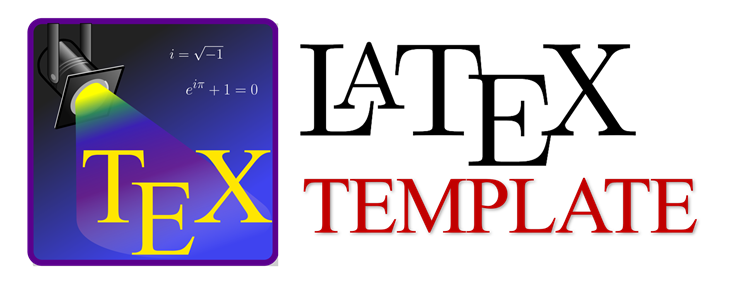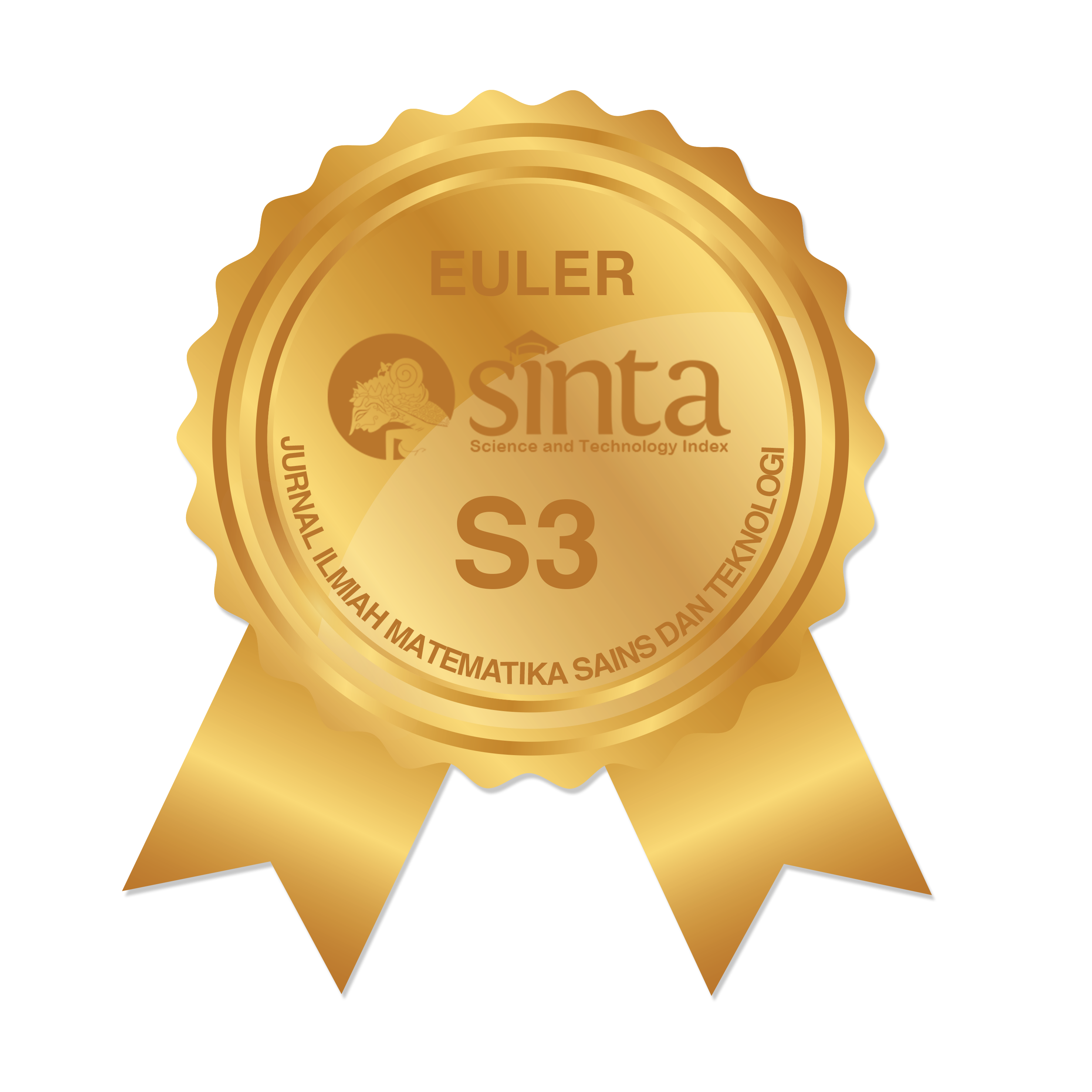Pengembangan E-Modul Berbasis Flip PDF dan Canva pada Materi Transformasi Geometri
Abstract
Keywords
Full Text:
PDFReferences
N. A. Makarim, Surat Edaran Menteri Pendidikan dan Kebudayaan Republik Indonesia Nomor 3 Tahun 2020 Tentang Pencegahan Corona Virus Disease (Covid-19) Pada Satuan Pendidikan. [Online] Available at https://pusdiklat.kemdikbud.go.id/surat-edaran-mendikbud-no-4-tahun-2020-tentang-pelaksanaan-kebijakan-pendidikan-dalam-masa-darurat-penyebaran-corona-virus-disease-covid-1-9/.
Y. Syafari, and M. Montessori, "Analisis Pembelajaran Daring Terhadap Motivasi Belajar Dan Prestasi Belajar Siswa Dimasa Pandemi Covid-19" Jurnal Basicedu, vol. 3, no. 2, pp. 524-532, 2020, doi: https://doi.org/10.31004/basicedu.v5i3.872.
S. Maskar and P. S. Dewi, "Peningkatan Kompetensi Guru Ma Darur Ridho Al-Irsyad Al Islamiyyah Pada Pembelajaran Daring Melalui Moodle" Journal of Social Sciences and Technology for Community Service (JSSTCS), vol. 2, no. 1, pp. 1-10, 2021, DOI: https://doi.org/10.33365/jsstcs.v2i1.875.
U. Hidayatul and A. Wachid, "Kegiatan Pembelajaran Kreatif Guru Di Masa Pandemi Covid 19 Untuk Meningkatkan Minat Belajar Siswa Pada MI Ma'arif NU Rabak" JISIP (Jurnal Ilmu Sosial dan Pendidikan), vol. 5, no. 3, pp. 261-267, 2021, doi: 10.36312/jisip.v5i3.2169.
Y. Susilo, "Peningkatan Motivasi Belajar Siswa Melalui model Pembelajaran Kooperatif Tipe Numbered Head Together (NHT) Materi Ajar Perbandingan Dan Fungsi Trigonometri Pada Siswa Kelas X" MATHEdunesa, vol. 2, no. 2, pp. 1-8, 2013, doi: https://doi.org/10.26740/mathedunesa.v2n2.p%25p.
M. Miftah, "Fungsi, dan peran media pembelajaran sebagai upaya peningkatan kemampuan belajar siswa" Kwangsan: Jurnal Teknologi Pendidikan, vol. 1, no. 2, pp. 95-105, 2013, doi: https://doi.org/10.31800/jtp.kw.v1n2.p95--105.
M. Mastur, M. Afifulloh, and L. N. Dina, "Upaya Guru dalam Melaksanakan Pembelajaran Daring pada Masa Pandemi Covid-19" JPMI : Jurnal Pendidikan Madrasah Ibtidaiyah, vol. 2, no. 3, pp. 72-81, 2020.
M. P. Rusman and R. Cepi, "Belajar dan Pembelajaran Berbasis Komputer" Bandung: Alfabeta, 2012.
N. M. Dwijayani, "Development of circle learning media to improve student learning outcomes" Journal of Physics: Conference Series, vol. 1321, no. 2, 2019, doi: 10.1088/1742-6596/1321/2/022099
A. E. Irawati and D. Setyadi, "Pengembangan E-Modul Matematika pada Materi Perbandingan Berbasis Android" Jurnal Cendekia Jurnal Pendidikan Matematika, vol. 05, no. 0, pp. 3148-3159, 2021, doi: https://doi.org/10.31004/cendekia.v5i3.467
D. Fajriani and R. Hidayat, "Pengembangan Media Pembelajaran Smart APPS Creator Berbasis Android Sebagai Upaya Meningkatkan Hasil Belajar Peserta Didik Bisnis Daring Dan Pemasaran" in Prosiding Seminar Nasional Kelompok Bidamg Keahliang TTN 2021, April, 2021, pp. 1-8.
D. Misbahudin, C. Rochman, D. Nasrudin, and I. Solihati, "Penggunaan Power Point Sebagai Media Pembelajaran: Efektifkah?" WaPFi (Wahana Pendidikan Fisika), vol. 3, no. 1, pp. 43-48, 2018, doi: https://doi.org/10.17509/wapfi.v3i1.10939
T. Nurrita, "Pengembangan media Pembelajaran untuk Meningkatakan Hasil Belajar Siswa" Misyikat, vol. 03, no. 01, pp. 171-187, 2018.
D. Sugianto, A. G. Abdullah, S. Elvyanti, and Y. Muladi, "Virtual module: Multimedia flipbook, basic digital technique" Innovation of Vocational Technology Education, vol. 9, no. 2, pp. 101-116, 2013, doi: https://doi.org/10.17509/invotec.v9i2.4860
K. A. Priyanthi, K. Agustini, and G. S. Santyadiputra, "Pengembangan E-Modul Berbantuan Simulasi Berorientasi Pemecahan Masalah Pada Mata Pelajaran Komunikasi Data (Studi Kasus : Siswa Kelas XI TKJ SMK Negeri 3 Singaraja)" Jurnal Pendidikan Teknologi dan Kejuruan, vol. 6, no. 2, pp. 40-49, 2017, doi: https://doi.org/10.23887/karmapati.v6i1.9267.
G. Suweken, I. G. A. Mahayukti, and I. M. Suarsana, "Pelatihan Program Aplikasi GeoGebra sebagai Upaya untuk Meningkatkan Keprofesionalan Guru SMP Di Kecamatan Buleleng" Laporan Pengabdian kepada Masyarakat, Singaraja: Universitas Pendidikan Ganesha, 2013
I. Hamzah and S. Mentari, "Development of Accounting E-Module to Support the Scientific Approach of Students Grade X Vocational High School" Journal of Accounting and Business Education, vol. 1, no. 1, pp. 78-88, 2017, doi: http://dx.doi.org/10.26675/jabe.v1i1.9751.
B. N. Fadilah, J. Ahmad, and N. Farida, "Pengembangan E-Modul Berbasis Contextual Teaching and Learning (CTL) pada Materi Geometri Transformasi dengan Berbantuan Flipbook Maker" Jurnal Pendidikan Matematika Universitas Lampung, vol. 9, no. 1, pp. 1-11, 2021, doi: http://dx.doi.org/10.23960/mtk/v9i1.pp1-11.
R. Inayah, P. Aswirna, and A. Asrar, "Pengembangan E-Modul Berbasis Etno-STEM Berbantuan Canva terintegrasi Gordang Sambilan terhadap Keterampilan Komunikasi Peserta Didik" Journal Cerdas Mahasiswa, vol. 4, no. 2, pp. 78-90, 2022, doi: https://doi.org/10.15548/jcm.v4i2.4784.
Sugiyono, Metode Penelitian Kuantitatif, Kualitatif, dan R&D. Bandung: Alfabeta, 2012.
W. Dick, W and Carrey, L, "The Systematic Design Instruction" Second Edition, Glenview, Illinois: Scott., Foreman and Company, 1985
A. Gunadharma, Pengembangan modul elektronik sebagai sumber belajar untuk mata kuliah multimedia design. Universitas Negeri Jakarta, 2011.
C. Kurniawan and D. Kuswandi, Pengembangan E-Modul Sebagai Media Literasi Digital Pada Pembelajaran Abad 21. Lamongan: Academia Publication, 2021.
A. Mais, Media Pembelajaran Anak Berkebutuhan Khusus, Edisi 2. Yogyakarta: CV Pustaka Abadi, 2018.
DOI: https://doi.org/10.34312/euler.v11i1.20222
Refbacks
- There are currently no refbacks.
Copyright (c) 2023 Muhammad Al Falah Kurniawan, Tri Nova Hasti Yunianta, Kriswandani Kriswandani

This work is licensed under a Creative Commons Attribution-NonCommercial 4.0 International License.
Euler : Jurnal Ilmiah Matematika, Sains dan Teknologi has been indexed by:
EDITORIAL OFFICE OF EULER : JURNAL ILMIAH MATEMATIKA, SAINS, DAN TEKNOLOGI |
 | Department of Mathematics, Faculty of Mathematics and Natural Science, Universitas Negeri Gorontalo Jl. Prof. Dr. Ing. B. J. Habibie, Tilongkabila, Kabupaten Bone Bolango 96554, Gorontalo, Indonesia |
 | Email: [email protected] |
 | +6287777-586462 (WhatsApp Only) |
 | Euler : Jurnal Ilmiah Matematika, Sains dan Teknologi (p-ISSN: 2087-9393 | e-ISSN:2776-3706) by Department of Mathematics Universitas Negeri Gorontalo is licensed under a Creative Commons Attribution-NonCommercial 4.0 International License. Powered by Public Knowledge Project OJS. |















